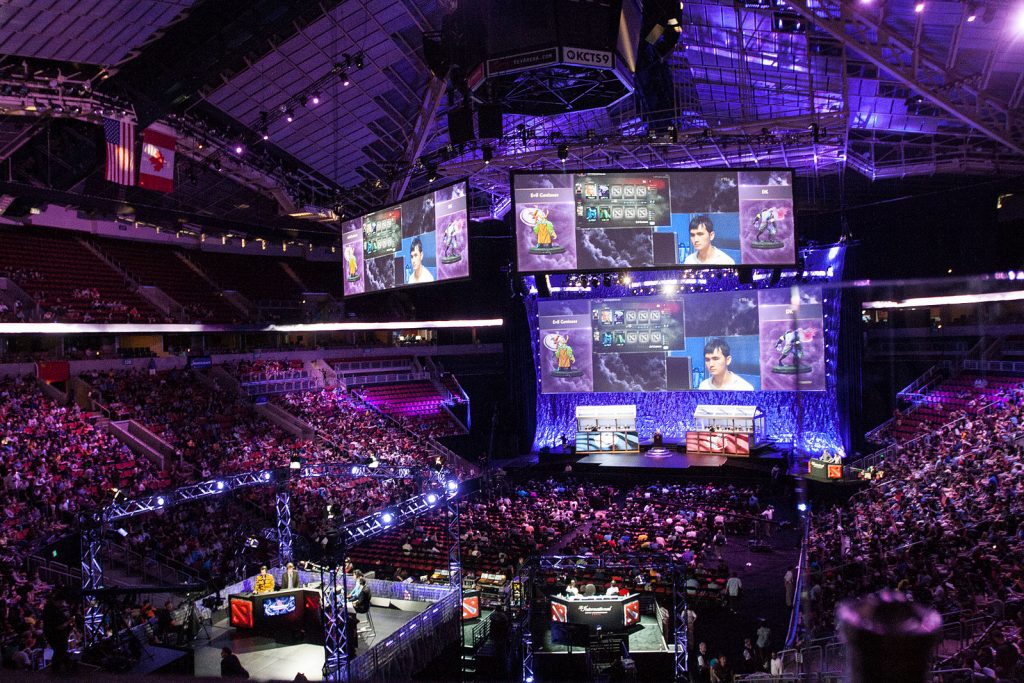
At first, it was just a headline on Twitter – you scarcely noticed it. Some computer game had a tournament in Korea or something, you don’t know. Now it’s 2019 and your kid cousin won’t stop quoting Overwatch taunts and talking about Ninja streams – whatever those are – at Sunday dinner. What happened? He tells you he’s into e-sports now.
“E-sports?” you think to yourself. “What the hell are e-sports? How can a computer game be a sport?”
Encompassing numerous games with a variety of play styles, e-sports – as they have come to be called – occupy an odd niche in our entertainment landscape. As an activity, they dwell just below the surface of the mainstream, such that its existence has largely been signaled through only the occasional rumbling on social media, hardly to be noticed alongside the day’s other trending hashtags. And yet ESPN certainly sees something of worth – given their quick expansion into streaming the $900 million industry, beginning with a partnership with Riot Games, the developer of League of Legends.
Encompassing real-time strategy, first-person shooters and virtual card games. What first stands out to most who are unfamiliar with the genre is the odd, perhaps contrived title: why call it a sport if it is a virtual and not physical activity? There are a number of justifications. In team-based games such as Starcraft or League of Legends, the teams have a rigorous practice schedule. In 2015, one member of “Team Liquid,” a professional League of Legends team, reported practicing 50 hours a week with his team. Clearly, to think of this activity as “just clicks on a keyboard” and not also a physical endeavor seems inappropriate in this light.
The first instance of e-sports as an activity is hard to pin down. Short of informal contests around arcade cabinets, it can likely be traced back to the late 90s/early 2000s LAN parties – where the first generation of players would gather to play multiplayer shooters such Counter-Strike, team-based arena fighters like DOTA or strategy games like Starcraft. Organizing their meetings on the forums which used to dot the early internet, these were a far cry from the corporate sponsorships and stadium seating of today
E-sports are necessarily an outgrowth of communications technology, and this is demonstrated best not just by the ability of players to connect and play from all over the globe, but also in its achievement of popularity to begin with. The mainstream channels by which the genre is seen today came after the fact. Broadcasting e-sports and creating an audience for them originates in the once-novel, now
Streaming sites existed before Twitch, in the form of the occasionally slow and difficult-to-monetize sites like hitbox.tv, now smashcast.tv and own3d.tv – the former of which competes with Twitch, while the other is now defunct. Of course, some may find it strange at first to watch a game rather than play it. Those should be reminded how many masses of people watch football on television religiously but find themselves winded walking up steps. Additionally, the global nature of the internet has allowed streaming and gaming to intertwine people all over the world, making this video game hobby an international phenomenon.
Even still, the genre exists close to home as well. That’s certainly been proven the case at nearby Park University, which will see the first collegiate e-sports program in the Kansas City metro area, with scholarships to be added next year. However, one of the advantages of a hobby in one of these games is the ease with which a team can form without sponsorship – demonstrated by another local operation: the Gameroos of UMKC, whose meetings are facilitated in club format. Perhaps some Jewelligans will be next in line.
